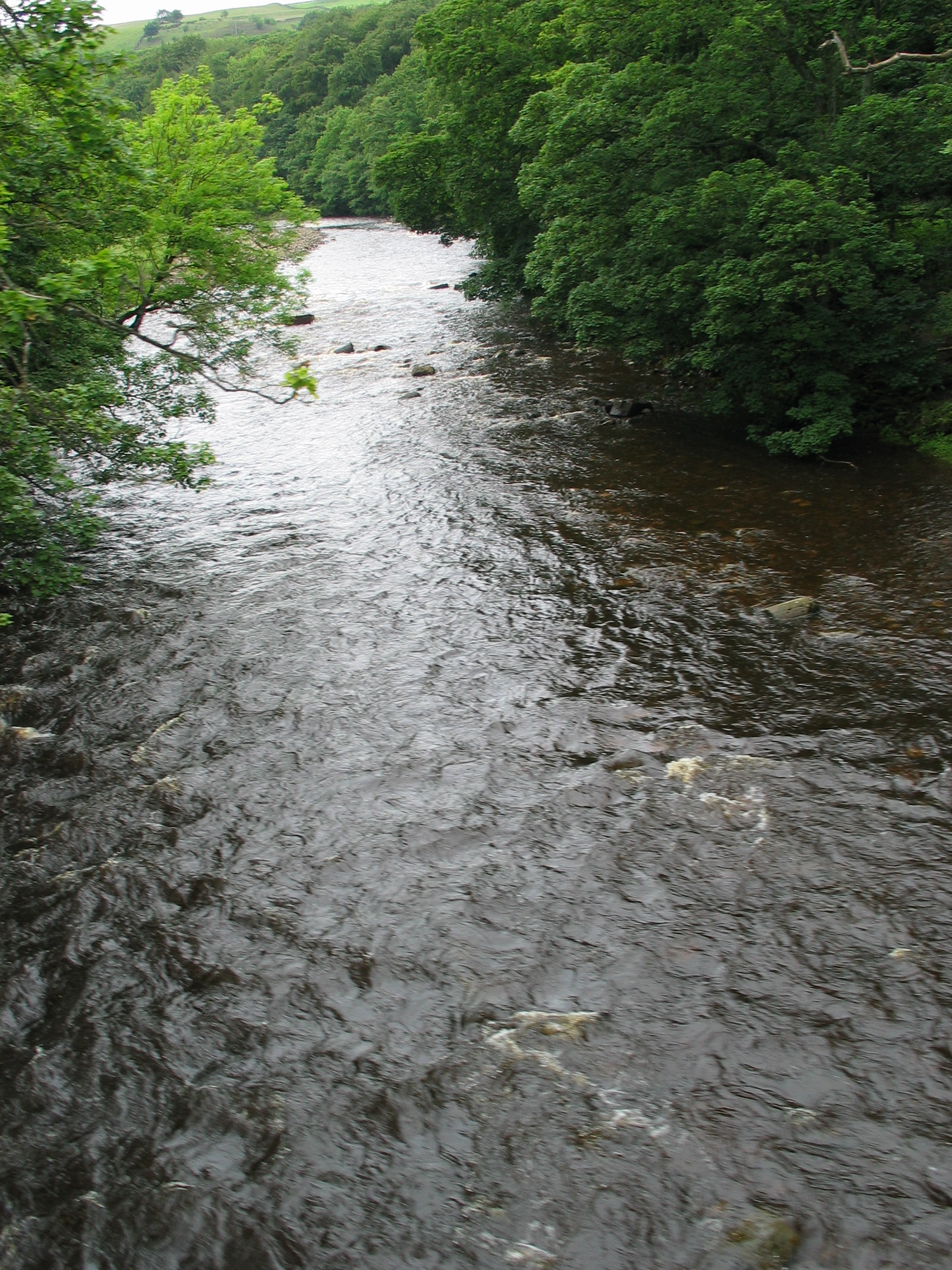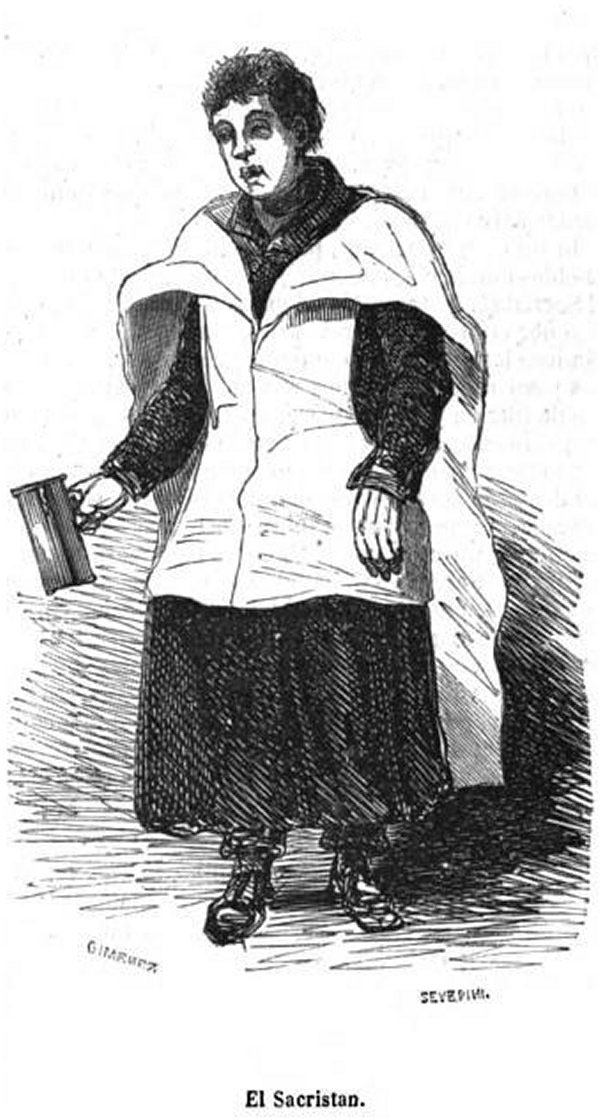|
Finchale Priory
Finchale Priory () sometimes referred to as Finchale Abbey was a 13th-century Benedictine priory. The remains are sited by the River Wear, four miles from Durham, England. It is a Grade I listed building. Early history Godric was born about 1070. After years of travel as a merchant, sailor, and pilgrim, he felt called to change his life. Initially he lived in caves and woods before settling with an elderly hermit at Wolsingham in upper Weardale. Around 1112 Godric was living in Durham, serving as doorkeeper at the hospital church of St Giles. He persuaded the Bishop of Durham, Ranulf Flambard, who had befriended him, to grant him a place to live as a hermit at Finchale, by the River Wear. There Godric created a hermitage dedicated to St John the Baptist. Godric's biographers recorded that he lived an ascetic life on this site for 50 years, living and sleeping outside and rejecting expensive cloth and plentiful food. Godric's life was first recorded by Reginald of Durha ... [...More Info...] [...Related Items...] OR: [Wikipedia] [Google] [Baidu] |
River Wear
The River Wear (, ) in North East England rises in the Pennines and flows eastwards, mostly through County Durham to the North Sea in the City of Sunderland. At long, it is one of the region's longest rivers, wends in a steep valley through the cathedral city of Durham and gives its name to Weardale in its upper reach and Wearside by its mouth. Etymology The origin behind the hydronym ''Wear'' is uncertain but is generally understood to be Celtic. The ''River Vedra'' on the Roman Map of Britain may very well be the River Wear. The name may be derived from Brittonic ''*wejr'' (<''*wẹ:drā''), which meant "a bend" (c.f ''-gwair-''). An alternative but very problematic etymology might involve ''*wẹ:d-r-'', from a lengthened form of the |
St John The Baptist
John the Baptist or , , or , ;Wetterau, Bruce. ''World history''. New York: Henry Holt and Company. 1994. syc, ܝܘܿܚܲܢܵܢ ܡܲܥܡܕ݂ܵܢܵܐ, Yoḥanān Maʿmḏānā; he, יוחנן המטביל, Yohanān HaMatbil; la, Ioannes Baptista; cop, ⲓⲱⲁⲛⲛⲏⲥ ⲡⲓⲡⲣⲟⲇⲣⲟⲙⲟⲥ or ; ar, يوحنا المعمدان; myz, ࡉࡅࡄࡀࡍࡀ ࡌࡀࡑࡁࡀࡍࡀ, Iuhana Maṣbana. The name "John" is the Anglicized form, via French, Latin and then Greek, of the Hebrew, "Yochanan", which means "YHWH is gracious"., group="note" ( – ) was a mission preacher active in the area of Jordan River in the early 1st century AD. He is also known as John the Forerunner in Christianity, John the Immerser in some Baptist Christian traditions, and Prophet Yahya in Islam. He is sometimes alternatively referred to as John the Baptiser. John is mentioned by the Roman Jewish historian Josephus and he is revered as a major religious figure Funk, Robert W. & the Je ... [...More Info...] [...Related Items...] OR: [Wikipedia] [Google] [Baidu] |
Monasteries In County Durham
A monastery is a building or complex of buildings comprising the domestic quarters and workplaces of monastics, monks or nuns, whether living in communities or alone (hermits). A monastery generally includes a place reserved for prayer which may be a chapel, church, or temple, and may also serve as an oratory, or in the case of communities anything from a single building housing only one senior and two or three junior monks or nuns, to vast complexes and estates housing tens or hundreds. A monastery complex typically comprises a number of buildings which include a church, dormitory, cloister, refectory, library, balneary and infirmary, and outlying granges. Depending on the location, the monastic order and the occupation of its inhabitants, the complex may also include a wide range of buildings that facilitate self-sufficiency and service to the community. These may include a hospice, a school, and a range of agricultural and manufacturing buildings such as a barn, a forge ... [...More Info...] [...Related Items...] OR: [Wikipedia] [Google] [Baidu] |
Grade I Listed Buildings In County Durham
There are more than 9000 Grade I listed buildings in England. This page is a list of these buildings in the county of Durham, sub-divided by unitary authority A unitary authority is a local authority responsible for all local government functions within its area or performing additional functions that elsewhere are usually performed by a higher level of sub-national government or the national governme .... County Durham Darlington Hartlepool Stockton-on-Tees Notes See also * Grade II* listed buildings in County Durham References National Heritage List for EnglandKeys To The PastDurham/Northumbria councils site External links {{DEFAULTSORT:List Of Grade I Listed Buildings In Durham Durham Grade I Lists of Grade I listed buildings in North Yorkshire ... [...More Info...] [...Related Items...] OR: [Wikipedia] [Google] [Baidu] |
English Heritage Sites In County Durham
English usually refers to: * English language * English people English may also refer to: Peoples, culture, and language * ''English'', an adjective for something of, from, or related to England ** English national identity, an identity and common culture ** English language in England, a variant of the English language spoken in England * English languages (other) * English studies, the study of English language and literature * ''English'', an Amish term for non-Amish, regardless of ethnicity Individuals * English (surname), a list of notable people with the surname ''English'' * People with the given name ** English McConnell (1882–1928), Irish footballer ** English Fisher (1928–2011), American boxing coach ** English Gardner (b. 1992), American track and field sprinter Places United States * English, Indiana, a town * English, Kentucky, an unincorporated community * English, Brazoria County, Texas, an unincorporated communi ... [...More Info...] [...Related Items...] OR: [Wikipedia] [Google] [Baidu] |
Bishop Of Carlisle
The Bishop of Carlisle is the Ordinary of the Church of England Diocese of Carlisle in the Province of York. The diocese covers the county of Cumbria except for Alston Moor and the former Sedbergh Rural District. The see is in the city of Carlisle where the seat is located at the Cathedral Church of the Holy and Undivided Trinity which was a collegiate church until elevated to cathedral status in 1133. The diocese was created in 1133 by Henry I out of part of the Diocese of Durham. It was extended in 1856 taking over part of the Diocese of Chester. The residence of the bishop was Rose Castle, Dalston, until 2009; the current bishop is the first to reside in the new Bishop's House, Keswick. The current bishop is James Newcome, the 67th Bishop of Carlisle, who signs ''James Carliol'' and was enthroned on 10 October 2009. History Early times The original territory of the diocese first became a political unit in the reign of King William Rufus (1087–1100), who m ... [...More Info...] [...Related Items...] OR: [Wikipedia] [Google] [Baidu] |
Richard Bell (bishop)
Richard Bell (died 1496) was a Bishop of Carlisle The Bishop of Carlisle is the Ordinary of the Church of England Diocese of Carlisle in the Province of York. The diocese covers the county of Cumbria except for Alston Moor and the former Sedbergh Rural District. The see is in the city of Car .... He was selected 11 February 1478, and consecrated 26 April 1478. He resigned the see on 4 September 1495, and died in 1496.Fryde, et al. ''Handbook of British Chronology'' p. 236 He served as Prior of Finchale from 1457 to 1464.Raines ''Charters of Endowment'' Citations References * * Bishops of Carlisle 15th-century English Roman Catholic bishops 1496 deaths Year of birth unknown {{England-bishop-stub ... [...More Info...] [...Related Items...] OR: [Wikipedia] [Google] [Baidu] |
Uhtred (Benedictine Theologian)
Uthred or Uhtred of Boldon (also spelled Owtred; – 28 January 1397) was an English Benedictine monk, theologian and writer, born at Boldon, North Durham; he died at Finchale Abbey. Life Uhtred joined the Benedictine community of Durham Abbey about 1332 and was sent to London in 1337. Three years later he entered Durham College, Oxford, a house which the Durham Benedictines had established at Oxford for those of their members who pursued their studies at the University of Oxford. He was graduated there as licentiate in 1352 and as doctor in 1357. During the succeeding ten years, and even previously, he took part in numerous disputations at Oxford University, many of which were directed against members of the mendicant orders. It is on this account that John Bale wrongly designates him as a supporter of John Wycliffe. In 1367 Uhtred became prior of Finchale Abbey, a position to which he was appointed three other times, in 1379, 1386, and 1392. In 1368 and in 1381 he s ... [...More Info...] [...Related Items...] OR: [Wikipedia] [Google] [Baidu] |
Hospitium
Hospitium (; gr, ξενία, ''Xenia (Greek), xenia'', προξενία) is the ancient Greco-Roman concept of Hospitality, hospitality as a divine right of the guest and a divine duty of the host. Similar or broadly equivalent customs were and are also known in other cultures, though not always by that name. Among the Greeks and Romans, hospitium was of a twofold character: private and public. Private In Homeric times, all strangers, without exception, were regarded as being under the protection of Zeus#Roles and epithets, Zeus Xenios, the god of strangers and suppliants, and had the ''right to hospitality''. (It is doubtful whether, as is commonly assumed, they were considered as ipso facto enemies; they were rather guests.) Immediately on his arrival, the stranger was clothed and entertained, and no inquiry was made as to his name or Antecedent (genealogy), antecedents until the duties of hospitality had been fulfilled. When the guest parted from his host he was often presented ... [...More Info...] [...Related Items...] OR: [Wikipedia] [Google] [Baidu] |
Sacrist
A sacristan is an officer charged with care of the sacristy, the church, and their contents. In ancient times, many duties of the sacrist were performed by the doorkeepers ( ostiarii), and later by the treasurers and mansionarii. The Decretals of Gregory IX speak of the sacristan as if he had an honourable office attached to a certain benefice, and say that his duty was to care for the sacred vessels, vestments, lights, etc. Nowadays the sacristan is elected or appointed. The ''Cæremoniale Episcoporum'' prescribed that in cathedral and collegiate churches the sacristan should be a priest, and describes his duties in regard to the sacristy, the Blessed Eucharist, the baptismal font, the holy oils, the sacred relics, the decoration of the church for the different seasons and feasts, the preparation of what is necessary for the various ceremonies, the pregustation in pontifical Mass, the ringing of the church bells, the preservation of order in the church, and the distributio ... [...More Info...] [...Related Items...] OR: [Wikipedia] [Google] [Baidu] |
Sedilia
In church architecture, sedilia (plural of Latin ''sedīle'', "seat") are seats, usually made of stone, found on the liturgical south side of an altar, often in the chancel, for use during Mass for the officiating priest and his assistants, the deacon and sub-deacon. The seat is often set back into the main wall of the church itself. Not all sedilia are stone; there is a timber one thought to be 15th century in St Nicholas' Church at Rodmersham in Kent. When there is only one such seat, the singular form ''sedile'' is used, as for instance at St Mary's, Princes Risborough, Buckinghamshire or at St Agatha's, Coates, West Sussex. The first examples in the catacombs were single inlays for the officiating priest. In time, the more usual number became three, although there are examples of up to five sedilia. The custom of recessing them in the thickness of the wall began about the end of the 12th century; some early examples consist only of stone benches, and there is one instanc ... [...More Info...] [...Related Items...] OR: [Wikipedia] [Google] [Baidu] |





